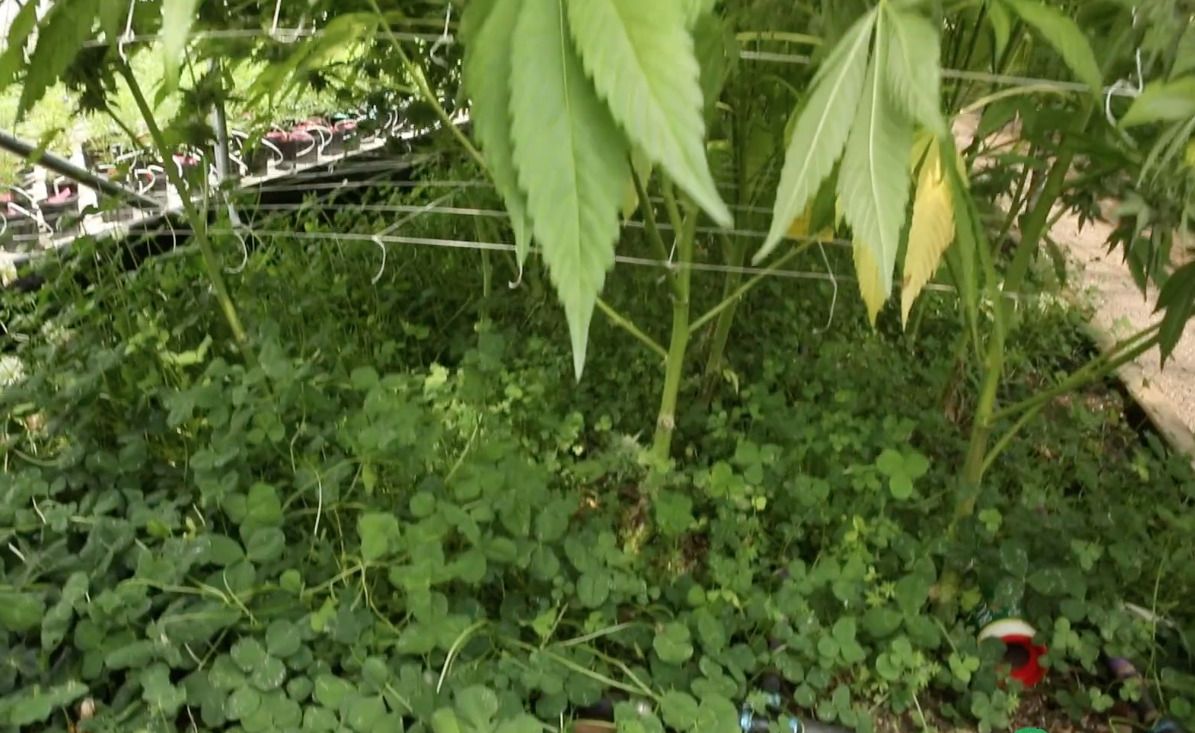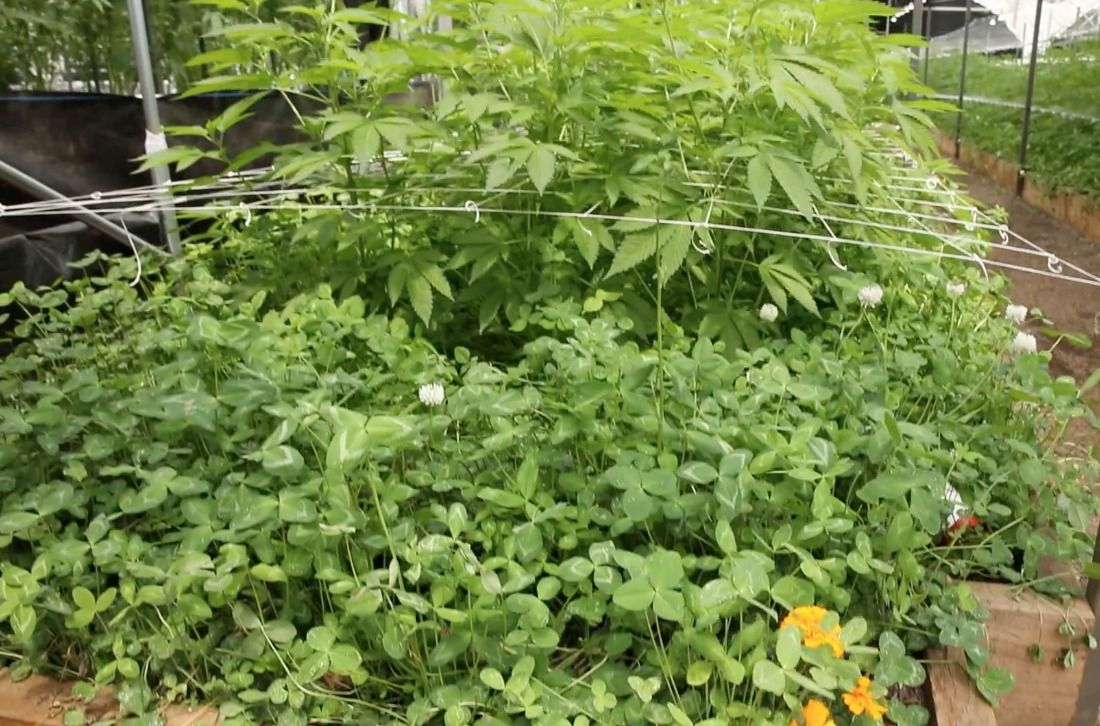These days, cannabis gardens are more popular and plentiful than ever before. As per statistics, now that growing cannabis is legal in most of the United States, people tend to use it in various ways. Thus, the techniques for making cannabis gardens sustainable and efficient are becoming more and more developed.
For instance, many cannabis growers have been looking into companion planting. This type of permaculture design for planting is definitely a great way to increase the yield and health of cannabis plants. Plus, it’s a great technique for both seasoned growers and absolute beginners.
It’s a type of planting that a majority of plants can benefit from. But while companion planting has shown to be useful for all kinds of cannabis crops; a large number of cannabis growers still stick to a monoculture setup for their plants. In other words — they only grow cannabis plants as the only crop in a specific area.
Sure, there are contextual reasons why this might be an okay setup — such as a lack of free space. But regardless of whether you’re doing this outdoors or indoors — switching to natural companion planting is definitely not difficult when it comes to cannabis.
Naturally Nurturing Your Cannabis Plants
So, why is companion planting one of the best practices when it comes to permaculture planting? It’s worth noting that permaculture represents the practice of cultivating plants by using as many natural resources and environments as possible; or at least closely mimicking them so that you can make the crops more sustainable.
In this sort of plant cultivation, companion planting is one of the most commonly used techniques. At its most basic, companion planting entails the practice of planting different types of vegetation close to one another; complementary plants that can increase the productivity and quality of the whole mini-ecosystem.
Naturally, your goal here is to have an end product that’s cleaner and better; without any negative side-effects that you might experience otherwise. This is achieved via all kinds of improvements for the processes of harvesting, nutrient provisions, and general pest control.
A more eco-friendly cannabis garden
When it comes to the world of plant growing, artificial compounds and their use in protecting and enhancing crops is actually a relatively recent development. In comparison to this, permaculture planting is a much more traditional agricultural technique; if we wanted to make a pun, we’d say it’s deeply rooted in the world’s agricultural history.
Sure, synthetic nutrients definitely have their place in plant growing; there are some contexts in which they’re certainly preferable to the organic route. More specifically — synthetic nutrients are simply more commercially viable if you want to be a professional cannabis grower.
However, if you care about the eco-friendliness of your garden more than its potential profitability — permaculture planting is definitely the way to go. And this is definitely becoming an increasingly more important aspect of plant growing — seeing as the need for completely natural, safe, and organic crops of all kinds is increasing rapidly. In that regard, cannabis is definitely not an exception.

At the end of the day, remember that monoculture planting doesn’t actually appear in nature; when left to their own devices, plants grow in the company of other plants, creating complex and mutually dependent ecosystems. You won’t find any example of plant species existing in solitude apart from artificial human gardens.
Getting your soil ready for permaculture planting
Now, one of the things people not familiar with companion planting tend to ask is — how do you deal with pest control in this all-organic planting scenario? The answer is rather simple — not all bacteria are bad. In reality, there is plenty of scientific proof for the existence of beneficial bacteria; those that work to shield your plants from different, adverse bacterial diseases.
This is definitely a better option than using artificial nutrients or pesticides; over time, these can be quite detrimental to the health of your soil. Apart from destroying harmful bacteria, they are also known for laying waste to the fungal and bacterial ecosystem found in the rhizosphere; in other words, the part where bacteria and plant roots meet.
The symbiotic relations between the two are crucial to the health of the soil and of the plants that you’re trying to cultivate. If you use non-organic pesticides, you may set the development of the soil back for entire centuries.
Best Layering Materials
If you want to preserve your plants in an organic way, layering is going to be something you want to do. But how do you actually achieve this successfully? First of all, you will need plant materials; but very specific ones. In other words, you need access to plant materials that don’t have a history of contact with pesticides, artificial nutrients, or pretty much any man-made chemicals.
Then, you can use them to come up with layers. In this regard, pretty much any unharmed organic materials from your garden will do the trick. We’re talking about stuff like trimmed grass, straws, leaves, and all kinds of plant residues.
Apart from that, there’s the option of using the stuff that you would otherwise set aside for the compost bin; biodegradable stuff, leftover food — as we said, pretty much anything that’s truly organic.
Best companion plants
When it comes to the actual plants that you’ll use as companion plants for your cannabis garden — there are certain plants that are better friendly companions than others. Firstly, you want to use sunflowers; these are known to invite bugs and mites that are beneficial to your cannabis patch. These mites actually feast on scales, gnats, and other harmful species of mites that could endanger your garden. Also, yarrow is a great bet, as it will attract ladybirds and predatory wasps to achieve the same effect.
On the other hand, companion planting isn’t just about pest control. If you want your cannabis to thrive without the use of any artificial nutrients; you will have to work on “feeding” your plants through other organic matter.
So, planting alfalfa is a great idea. This plant is an excellent source of nitrogen for your cannabis. And it’s also awesome as a layering plant for the cultivation period; just make sure not to pick up the plant material once you trim it — the point is for it to remain on the soil and get absorbed slowly.
Conclusion
As you can see, companion planting can be an excellent choice for the cannabis Sativa — just make sure you do all of the necessary research to facilitate the organic growth of your cannabis!
- The Ultimate Guide to Delta 8 Disposable Vapes: What You Need to Know - March 8, 2024
- The Environmental Impact of CBD Production - August 28, 2023
- Cannabis In Thailand: A Green Revolution - August 15, 2023


